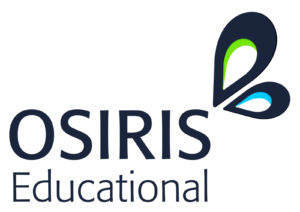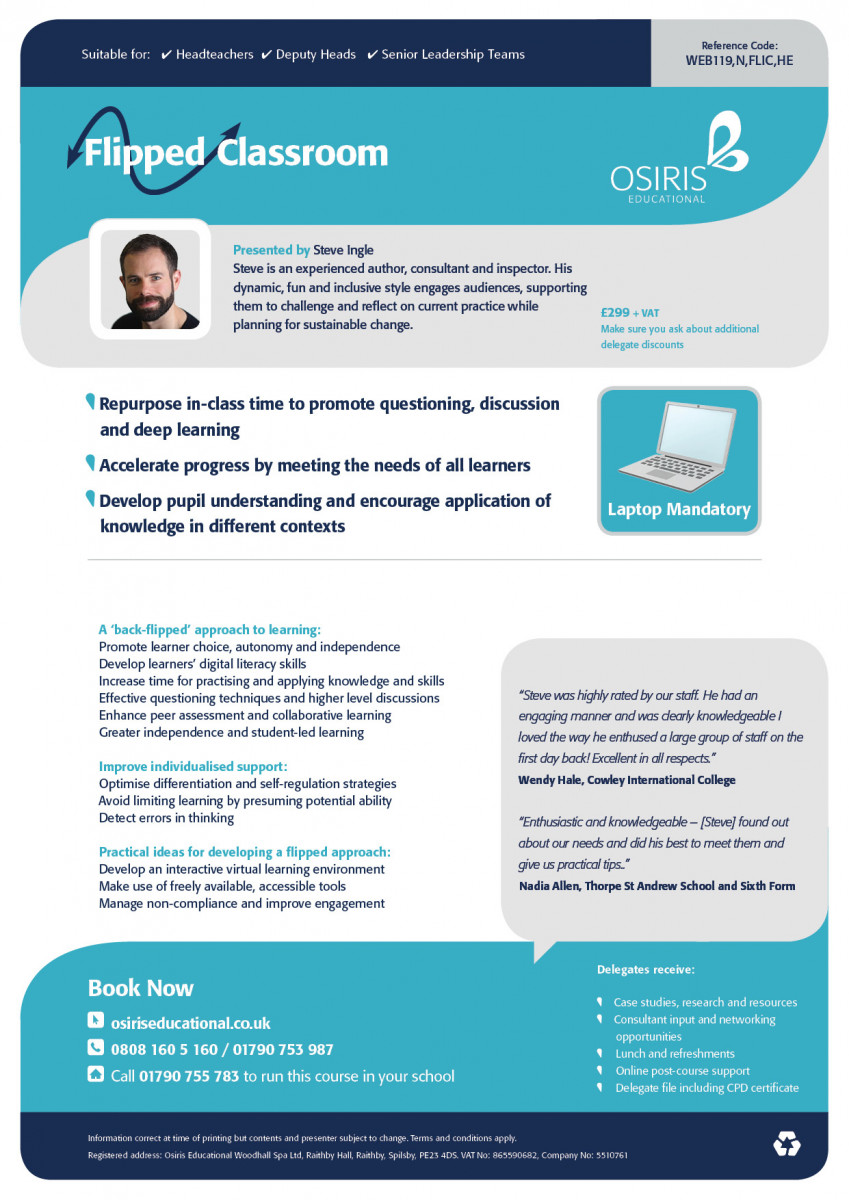Menu
Description
A ‘back-flipped’ approach to learning:
- Promote learner choice, autonomy and independence
- Develop learners’ digital literacy skills
- Increase time for practising and applying knowledge and skills
- Effective questioning techniques and higher level discussions
- Enhance peer assessment and collaborative learning
- Greater independence and student-led learning
Improve individualised support:
- Optimise differentiation and self-regulation strategies
- Avoid limiting learning by presuming potential ability
- Detect errors in thinking
Practical ideas for developing a flipped approach:
- Develop an interactive virtual learning environment
- Make use of freely available, accessible tools
- Manage non-compliance and improve engagement
brochures
Additional information
| Date | 13th November 2019, 18th November 2019 |
|---|---|
| Location | London |
| Venue | Venue to be confirmed up to 4 weeks in advance |
| Key Stage | Further Education |


